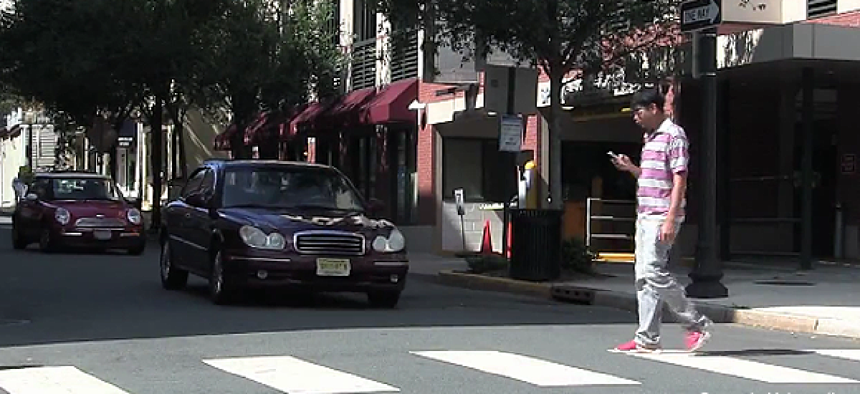8 apps for safer city intersections


Connecting state and local government leaders
Winning apps in New York City’s Connected Intersections Challenge used wearable devices and smartphone sensors in effort to drive down traffic fatalities and injuries.
Two apps, one to warn pedestrians they are about to enter an intersection and another alerting drivers to signs of drowsiness, took top honors in a recent tech challenge aimed at developing tools to improve traffic safety on the streets of New York City.
The apps were among 45 projects entered in the Connected Intersections Challenge, sponsored by AT&T. Entries were submitted from 13 countries and 26 states and featured technologies such as wearable devices, smartphone sensors, phone-to-phone systems and natural user interfaces.
"We need to use every tool in our arsenal to drive down traffic related fatalities and injuries,” said Kim Wiley-Schwartz, assistant commissioner of education and outreach in the New York City Department of Transportation, one of six judges of the $50,000 contest.
Tug, a grand prize winner, uses Bluetooth technology to transmit messages from crosswalk signs to mobile phones at intersections running the application. Pedestrians are warned to wait or cross safely when they have the right of way.
The Anti-Sleep Alarm, the other grand prize winner, used a Samsung Gear 2 smartwatch and a smartphone to detect drowsiness in drivers from hand gestures and facial recognition. The app prompts the driver to pull over and rest and sets off an alarm if it determines the driver is falling asleep at the wheel.
Another six projects were awarded prizes in the challenge:
Rider Alert aims to reduce collisions between vehicles and pedestrians especially cyclists by scanning for Bluetooth-enabled smartphones while moving through traffic. It will sound an alert on smartphones running the Rider Alert application when pedestrians and cyclists are nearby. The app also uses smartphone sensors to determine if the driver is looking at the smartphone screen and sounds a warning.
Yield! also uses Bluetooth to detect drivers or pedestrians within 10 to 30 meters of a smartphone using the app and delivers an alert notifying them of the other person’s presence.
Drowsy Detector Using facial recognition technology, the app determines when a driver is getting drowsy and sends a warning followed by an alert that can be deactivated only when driving stops. The app also sends alerts to others in the area that a drowsy driver is nearby.
Drive Safely This app uses near field communication (NFC) to determine if a smartphone user is in the driver’s seat of a vehicle and sends an auto-reply message to incoming calls and texts while the vehicle is moving. The app runs in the background and will not activate on public transit or when the smartphone owner is a passenger in a vehicle.
Look up! Using GPS, smartphone accelerometer and wearable sensors, the app anticipates when a pedestrian is crossing an intersection and delivers an on-screen alert warning the pedestrian to look up.
SafeDrive App An app that awards points to drivers for not texting while driving and provides smartphone owners the opportunity to redeem those points for products and services at partner companies.
NEXT STORY: Houston Introduces New Open-Data Policy




